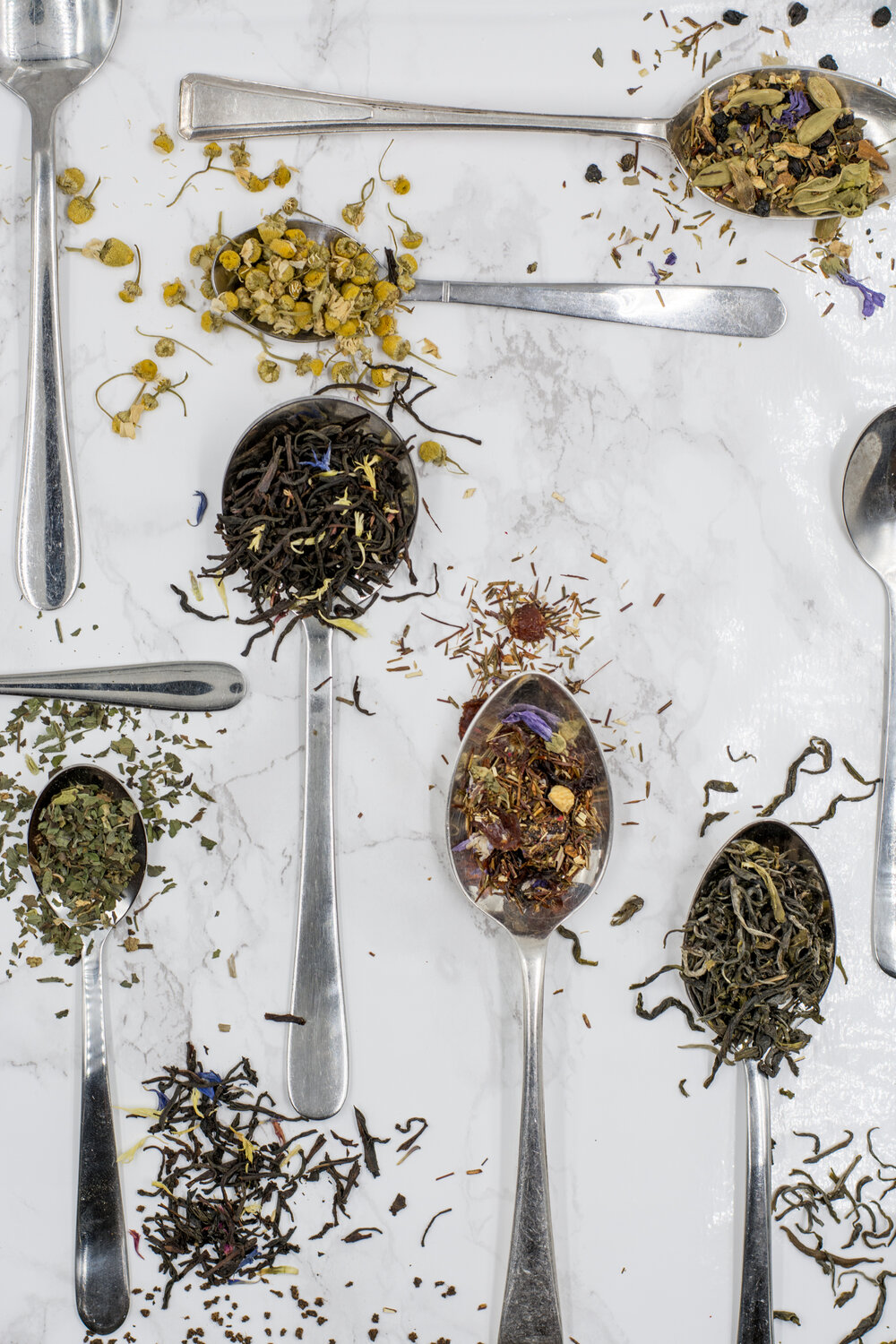
It originated in Southwest China, where it was used as a medicinal drink. Later, it spread to Europe as merchants introduced it on trade routes. Depending on where you are around the world, it may be pronounced “tea,” “cha,” “Ming,” “te,” or “Chai.”
There are many different types of tea, but believe it or not, it all comes from the same plant, the Camellia sinensis. Like wine, every harvest is different, depending on the soil, climate, temperature and rainfall. However, we can categorize it into five different varieties, based on their level of oxidation.
White tea is the least oxidized, or processed. It is extremely delicate and has a gentle flavor and aroma. The harvest process is very tedious and time consuming, so this tea is generally more expensive than other varieties.
Green tea is heat processed to prevent further oxidation. There are generally two methods. In China, the leaves are roasted or pan-fired, while in Japan, the leaves are steamed. Chinese green tea is lighter, with a citrus or smoky flavor. Japanese green tea is darker, with a grassy or vegetal flavor.
Oolong tea is semi-oxidized and typically comes from China and Taiwan. Oolong teas have the widest array of flavors and aromas because there are many different ways of harvesting it.
Black tea is the most well-known tea. It is fully oxidized and has a bitter flavor. The most famous black teas come from India and Sri Lanka. Many cultures consume black tea like coffee, with milk and sugar.
Fermented tea is typically called “Pu’er.” It is aged and exposed to microflora and bacteria that allows it to ferment, like wine or yogurt. These teas have a very mellow and earthy flavor profile.
In terms of quantity consumed per person, here is a list of the top ten countries that consume tea:
-
Turkey
-
Ireland
-
United Kingdom
-
Russia
-
Morocco
-
New Zealand
-
Egypt
-
Poland
-
Japan
-
Saudi Arabia
Tea has a host of benefits. Most prominently, it has a high concentration of antioxidants that can help prevent cancer by fighting free radicals and decreasing cell damage in the body. It may also help prevent clogging of the arteries, burn fat, improve energy and focus, reduce oxidative stress on the brain, lower bad “LDL” cholesterol and reduce the risk of stroke and neurological disorders.
While tea bags are common and easy, its best to brew tea using loose leaves. You can pick them up online or at any number of tea stores that have popped up in recent years. All you need is a steeper to strain the leaves and hot water.